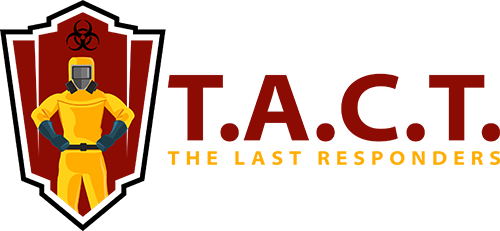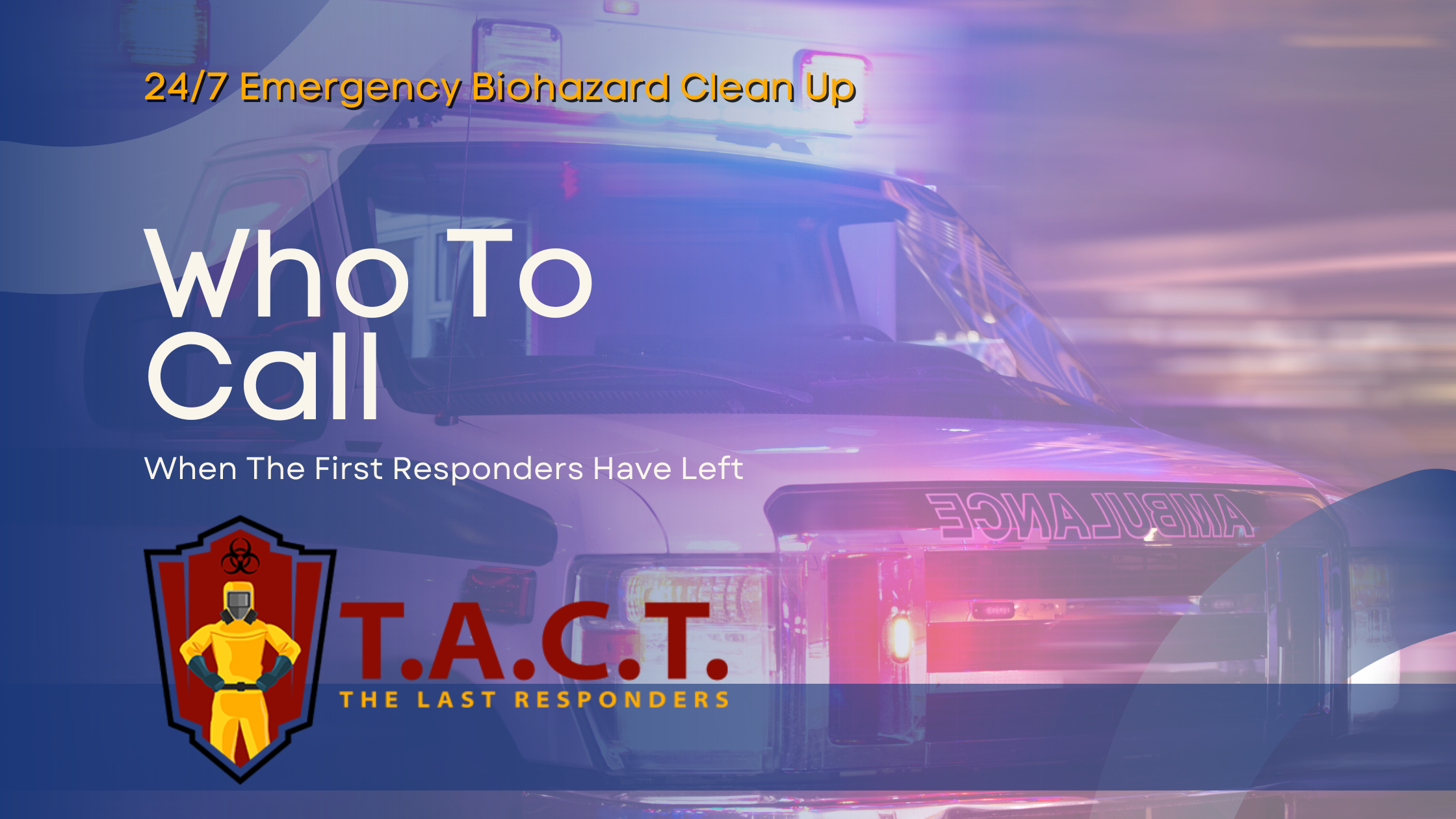Mold & Water/Fire Damage Restoration North Atlanta | T.A.C.T.
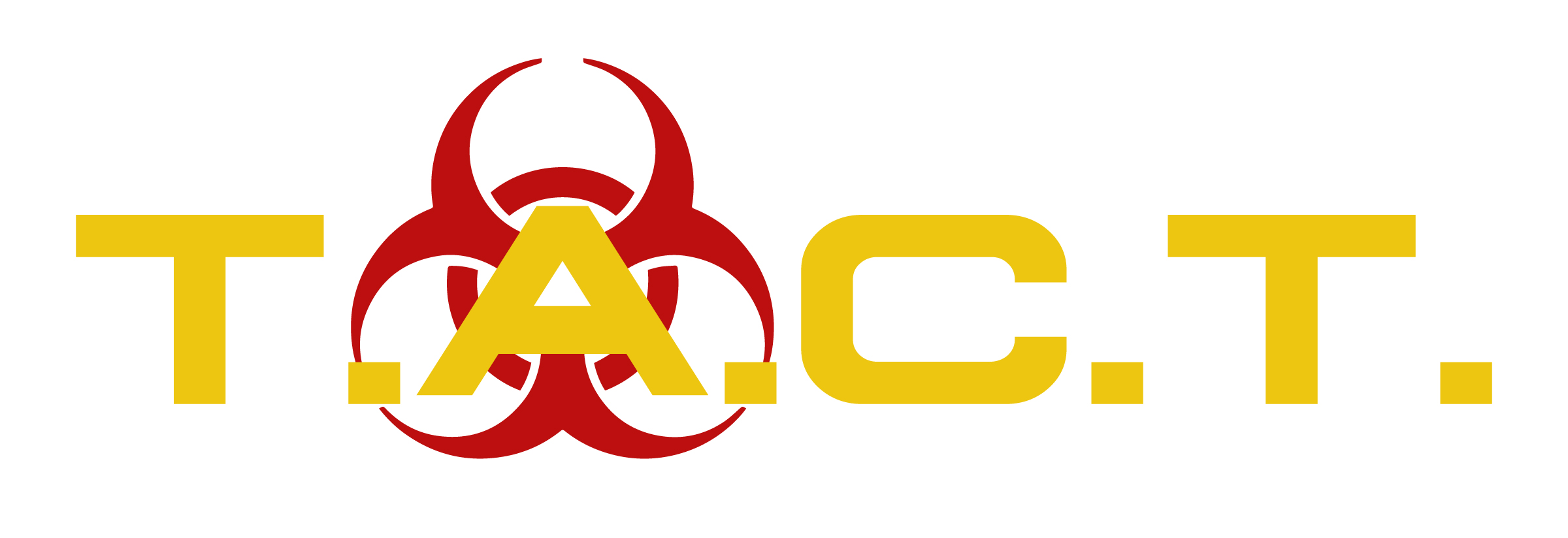
Mold Remediation and Water/Fire Damage Restoration in North Atlanta
Water damage strikes without warning. A burst pipe floods your basement at 2 AM. A kitchen fire leaves smoke damage throughout your home. Within hours, what started as a manageable problem transforms into a breeding ground for dangerous mold growth. The clock starts ticking immediately, and every moment of delay increases the risk to your property and your family's health.
Understanding the critical connection between water damage, fire damage, and mold growth can save you thousands of dollars and protect your loved ones from serious health complications. This comprehensive guide explores why immediate professional intervention is essential for mold remediation Atlanta situations and explains how expert restoration services can return your property to safe, livable conditions.
The Hidden Dangers of Delayed Action
When disaster strikes your North Atlanta property, the visible damage represents only part of the problem. Behind walls, under flooring, and within HVAC systems, moisture creates the perfect environment for mold colonies to establish and spread rapidly.
The 24-48 Hour Window
Mold spores exist everywhere in the environment, waiting for the right conditions to multiply. When moisture levels rise above 60% humidity, these dormant spores activate and begin reproducing exponentially. Within 24 to 48 hours of water exposure, visible mold growth can appear on organic materials like wood, drywall, carpet, and insulation.
This narrow time frame explains why water damage restoration Atlanta professionals emphasize immediate response. Once mold establishes itself, simple water extraction becomes a complex remediation project requiring specialized equipment, protective measures, and extensive reconstruction.
The Compounding Effect of Fire Damage
Fire damage creates unique challenges that significantly increase mold risk. The water used to extinguish fires saturates building materials already weakened by heat and smoke. Charred wood, damaged drywall, and compromised roofing systems allow moisture to penetrate deeper into structural components.
Additionally, fire damage often compromises HVAC systems, creating air circulation problems that trap moisture and accelerate mold growth. This is why fire damage restoration North Atlanta requires immediate moisture control measures alongside smoke and soot remediation.
Understanding Different Types of Mold and Their Risks
Not all mold poses the same level of danger, but any mold growth in your home requires professional attention to prevent health complications and structural damage.
Common Household Molds
Aspergillus: This prevalent mold appears in various colors and thrives on water-damaged materials. While some varieties are relatively harmless, certain types produce mycotoxins that can cause respiratory problems and allergic reactions.
Cladosporium: Often appearing as black or green patches, this mold grows on both indoor and outdoor surfaces. It commonly affects fabrics, wood surfaces, and HVAC systems, causing breathing difficulties and skin irritation.
Penicillium: Despite its medical benefits, household Penicillium creates blue-green growths that spread rapidly across water-damaged materials. It produces strong musty odors and can trigger severe allergic reactions.
Black Mold: The Most Dangerous Variety
Black mold removal Atlanta services deal with Stachybotrys chartarum, the most toxic variety commonly found in homes. This greenish-black mold produces mycotoxins that cause serious health problems including:
- Chronic respiratory issues
- Neurological symptoms
- Immune system suppression
- Severe allergic reactions
- Memory and concentration problems
Black mold typically grows on materials with high cellulose content that have remained wet for extended periods. It's commonly found behind walls, under flooring, and in areas with chronic moisture problems.
The Science Behind Professional Mold Remediation
Effective mold remediation Atlanta requires more than surface cleaning. Professional teams follow scientifically-proven protocols developed by the Institute of Inspection, Cleaning and Restoration Certification (IICRC) and the Environmental Protection Agency (EPA).
Comprehensive Assessment and Testing
Professional remediation begins with thorough inspection using advanced moisture detection equipment. Infrared cameras identify hidden water damage, while moisture meters measure exact humidity levels in building materials.
Air sampling determines mold spore concentrations and identifies specific mold types present. Surface sampling from suspected growth areas provides additional data about contamination levels. This scientific approach ensures complete understanding of the problem before remediation begins.
Containment and Air Filtration
Proper containment prevents mold spores from spreading to clean areas during removal. Professional teams establish negative air pressure using industrial air scrubbers equipped with HEPA filtration systems. These machines capture mold spores as small as 0.3 microns, preventing cross-contamination.
Containment barriers seal off affected areas while specialized equipment maintains proper air pressure differentials. This controlled environment protects both workers and occupants from exposure to disturbed mold spores.
Safe Removal and Disposal
Mold cleanup services Georgia follow strict protocols for removing contaminated materials. All porous materials that cannot be properly cleaned must be removed and disposed of according to EPA guidelines. This often includes:
- Water-damaged drywall and insulation
- Contaminated carpeting and padding
- Affected wood framing and subflooring
- HVAC components with mold growth
Non-porous materials undergo intensive cleaning using antimicrobial solutions specifically designed to kill mold and prevent regrowth. All contaminated materials are bagged and sealed before removal to prevent spore release during transport.
Water Damage: The Root Cause of Most Mold Problems
Understanding common water damage scenarios helps property owners recognize when professional intervention is necessary to prevent mold growth.
Plumbing Failures and Leaks
Burst pipes, failed water heaters, and plumbing leaks account for the majority of residential water damage claims. These incidents can release hundreds of gallons of water into living spaces within minutes, saturating flooring, walls, and personal belongings.
Professional water damage restoration Atlanta teams respond with powerful extraction equipment that removes standing water quickly. Industrial dehumidifiers and air movers then dry affected materials to below 15% moisture content, preventing mold establishment.
Storm and Flood Damage
Georgia's severe weather patterns create significant water damage risks for North Atlanta properties. Heavy rainfall can overwhelm drainage systems, causing basement flooding and foundation seepage. High winds may damage roofing systems, allowing water intrusion that leads to extensive mold growth.
Storm damage often affects multiple building systems simultaneously, requiring comprehensive restoration that addresses water extraction, structural drying, and preventive mold treatment.
HVAC-Related Moisture Problems
Heating and cooling systems can create moisture problems when poorly maintained or improperly installed. Condensation from air conditioning units, blocked drainage systems, and damaged ductwork create ideal conditions for mold growth.
Professional restoration includes thorough HVAC system inspection and cleaning to eliminate moisture sources and prevent future mold problems.
Fire Damage Restoration: A Complex Challenge
Fire damage restoration North Atlanta involves multiple interconnected challenges that require specialized expertise and equipment to address safely and effectively.
Smoke and Soot Contamination
Fire damage extends far beyond visible burning. Smoke carries toxic particles throughout the property, penetrating porous materials and creating persistent odors. Soot settles on surfaces throughout the building, requiring specialized cleaning techniques to remove completely.
Different types of fires create different contamination patterns. Protein fires from cooking incidents create strong odors but minimal visible residue. Synthetic material fires produce thick, oily soot that requires intensive cleaning. Professional teams understand these differences and select appropriate cleaning methods for each situation.
Water Damage from Fire Suppression
Water used to extinguish fires creates immediate secondary damage that must be addressed quickly to prevent mold growth. Fire-damaged buildings often have compromised structural integrity that allows water to penetrate deeper than normal flooding conditions.
Professional restoration teams coordinate fire damage repair with water extraction and drying to ensure complete moisture removal before reconstruction begins.
Structural Assessment and Repair
Fire damage affects building materials in complex ways that require expert evaluation. Heat weakens structural components, while smoke and soot create corrosive conditions that continue damaging materials after the fire is extinguished.
Professional restoration includes comprehensive structural assessment to determine what materials can be cleaned and restored versus what requires replacement. This evaluation protects occupant safety while controlling restoration costs.
The Professional Restoration Process
Effective property restoration follows a systematic approach that addresses immediate safety concerns while preventing long-term problems like mold growth.
Emergency Response and Stabilization
Professional restoration begins with 24/7 emergency response to minimize damage and begin stabilization measures. Initial steps include:
- Property security and board-up services
- Water extraction and moisture removal
- Temporary power and climate control
- Content protection and removal
- Initial damage assessment and documentation
This immediate response prevents additional damage and creates stable conditions for comprehensive restoration work.
Comprehensive Damage Assessment
Detailed assessment determines the full scope of restoration needed. Professional teams use advanced equipment to identify hidden damage and develop comprehensive restoration plans that address all affected building systems.
Assessment includes moisture mapping, air quality testing, structural evaluation, and content damage evaluation. This thorough approach ensures no hidden damage is overlooked during restoration.
Specialized Cleaning and Restoration
Different types of damage require specific cleaning and restoration techniques. Professional teams have the training and equipment to handle:
Fire Damage Cleaning: Specialized soot and smoke removal using dry cleaning techniques, wet cleaning methods, and abrasive cleaning when necessary.
Water Damage Drying: Industrial dehumidification, air movement, and heat application to achieve proper moisture levels in all building materials.
Mold Remediation: Safe removal of contaminated materials, antimicrobial treatment, and preventive measures to inhibit future growth.
Reconstruction and Final Restoration
After cleaning and remediation, professional teams coordinate necessary reconstruction work to return the property to pre-loss condition. This may include:
- Drywall replacement and painting
- Flooring installation and refinishing
- Kitchen and bathroom reconstruction
- HVAC system repair or replacement
- Electrical and plumbing system restoration
Choosing the Right Restoration Partner
Selecting qualified professionals for mold remediation and damage restoration significantly impacts both the immediate results and long-term success of your property recovery.
Essential Certifications and Training
Look for companies with proper industry certifications including:
IICRC Certification: The Institute of Inspection, Cleaning and Restoration Certification provides standardized training for water damage restoration, fire damage restoration, and mold remediation.
EPA Certification: Environmental Protection Agency certification ensures proper handling of hazardous materials and compliance with federal regulations.
State Licensing: Verify that contractors hold appropriate state and local licenses for restoration work in Georgia.
Advanced Equipment and Technology
Professional restoration requires specialized equipment that most companies don't possess:
Moisture Detection Equipment: Thermal imaging cameras, moisture meters, and hygrometers provide accurate assessment of water damage extent.
Extraction Equipment: Truck-mounted extractors and portable units remove water quickly and efficiently.
Drying Equipment: Industrial dehumidifiers, air movers, and heat drying systems achieve proper moisture levels in building materials.
Air Filtration Systems: HEPA air scrubbers remove contaminants during restoration work.
Insurance Knowledge and Support
Professional restoration companies work directly with insurance providers to streamline the claims process and ensure proper coverage. Look for companies that:
- Understand insurance requirements and documentation needs
- Communicate directly with adjusters and claims representatives
- Provide detailed estimates and progress reports
- Accept insurance assignments when appropriate
Prevention: Your First Line of Defense
While professional restoration can address damage effectively, prevention remains the best protection against costly mold and water damage problems.
Regular Maintenance and Inspection
Schedule annual inspections of plumbing systems, HVAC equipment, and roofing to identify potential problems before they cause damage. Address minor leaks and moisture issues immediately to prevent mold establishment.
Humidity Control
Maintain indoor humidity levels between 30-50% to prevent mold growth. Use exhaust fans in bathrooms and kitchens, and consider whole-house dehumidification systems in humid climates.
Proper Ventilation
Ensure adequate ventilation in basements, crawl spaces, and attics. Poor air circulation creates conditions that promote mold growth even without visible water damage.
Taking Action When Disaster Strikes
When water damage, fire damage, or mold problems affect your North Atlanta property, immediate professional intervention protects both your investment and your family's health. The complexity of modern restoration work requires specialized knowledge, equipment, and experience that only qualified professionals possess.
Professional restoration services provide more than technical expertise—they offer peace of mind during one of life's most stressful experiences. By choosing experienced professionals who understand the unique challenges of Georgia's climate and building practices, you ensure that your property restoration meets the highest standards of safety and quality.
Remember that attempting DIY restoration often creates additional problems that increase costs and extend recovery time. Professional teams have the training, equipment, and experience to address complex restoration challenges safely and effectively while coordinating with insurance providers to manage costs and streamline the process.
Don't let water damage, fire damage, or mold problems compromise your family's safety or your property's value. Contact qualified restoration professionals immediately when problems arise, and take proactive steps to prevent future damage through regular maintenance and proper humidity control.
Meta Title: Mold & Water/Fire Damage Restoration North Atlanta | T.A.C.T.
Meta Description: Professional mold remediation and damage restoration in North Atlanta. Expert water damage, fire damage, and black mold removal services available 24/7.
Latest news
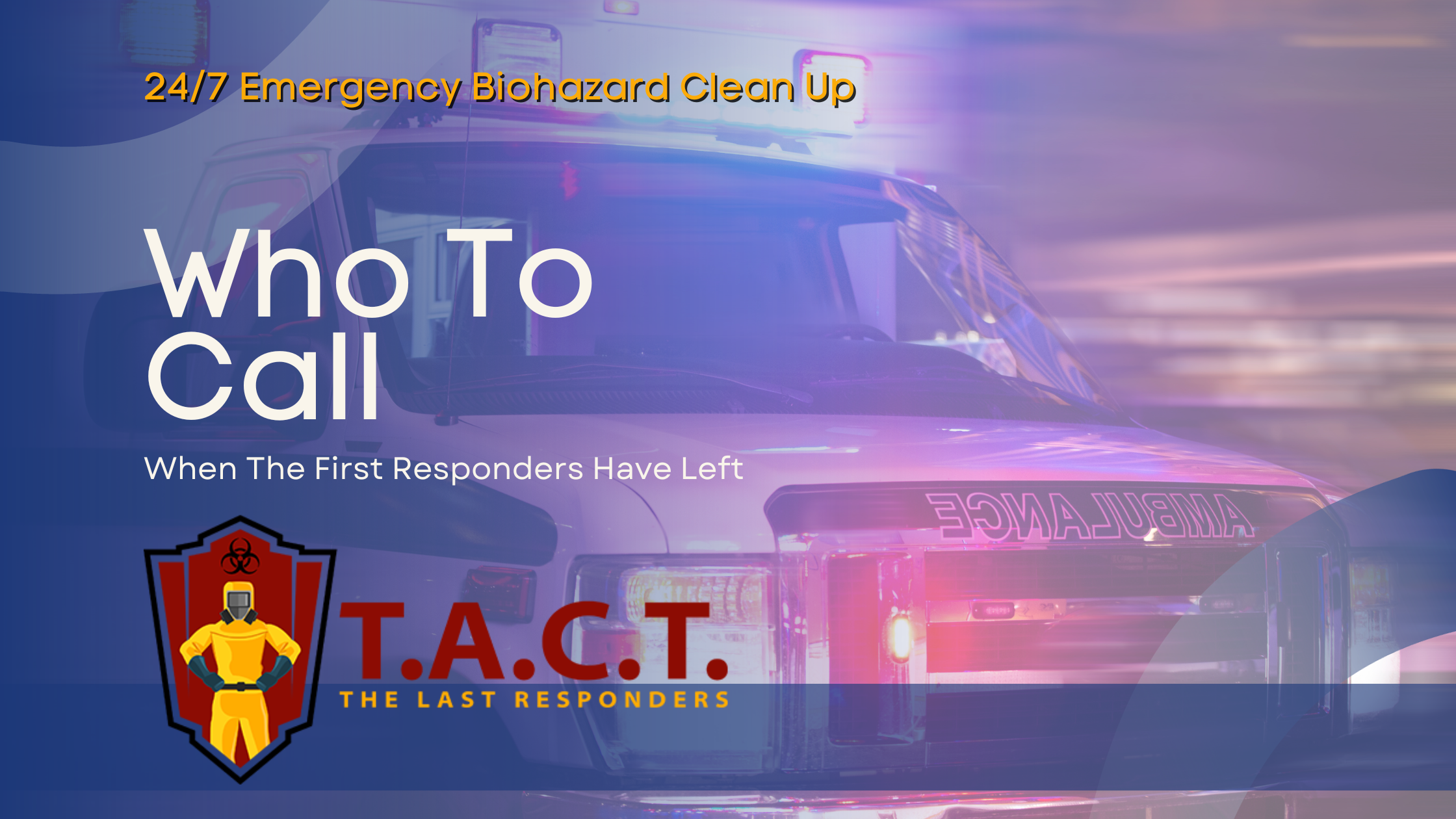
Bio Cleaning Services
Read More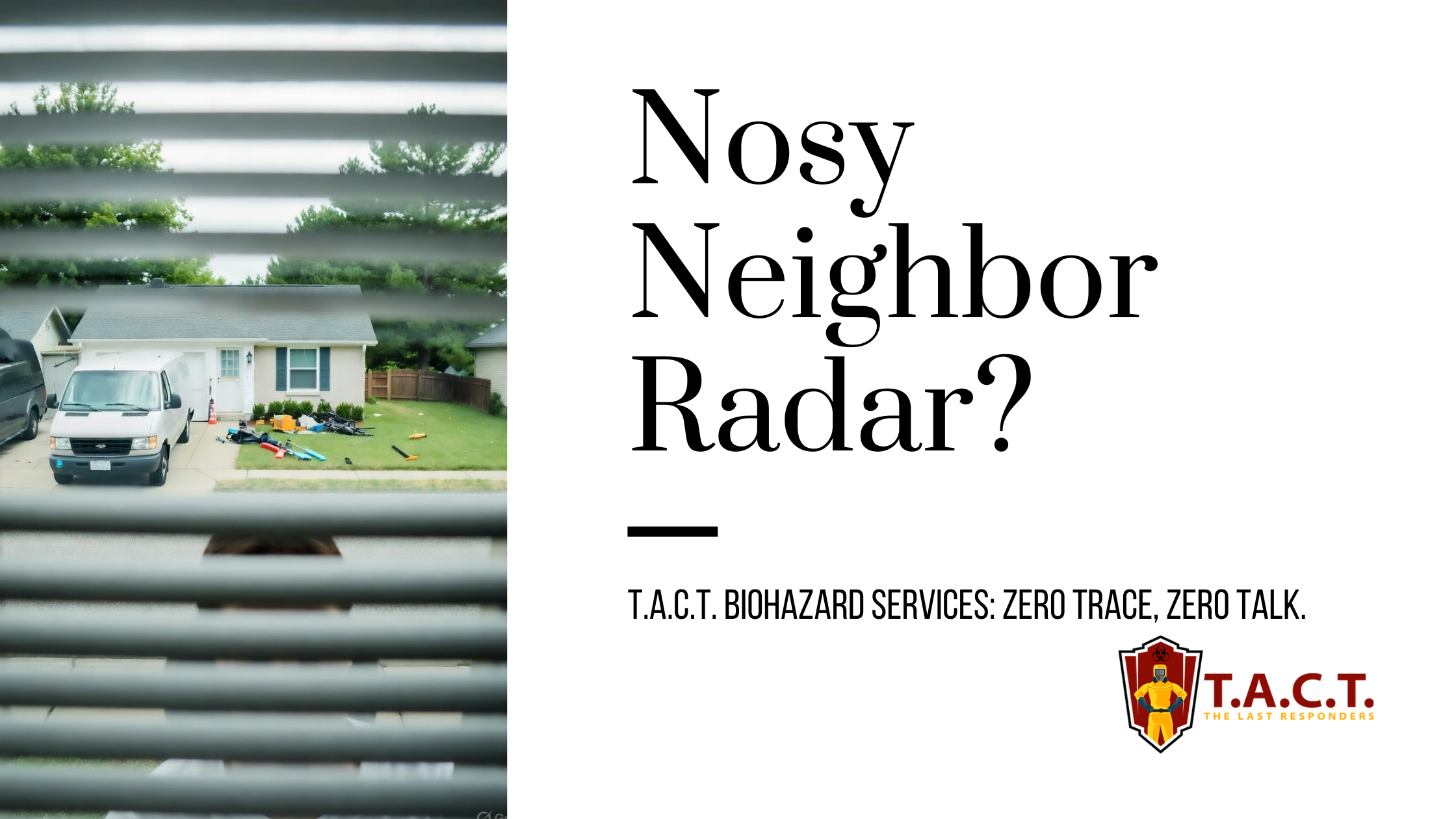
Nosy neighbors peeking? T.A.C.T. North Atlanta offers discreet biohazard remediation for rodent infestations, mold, hoarding, and more. Unmarked vehicles, quiet experts, full privacy—24/7 service at 470-781-4775.
Read More